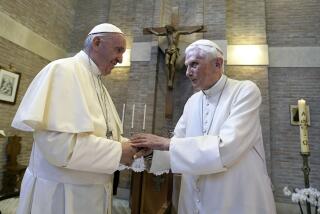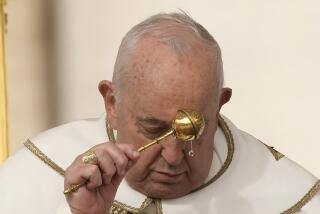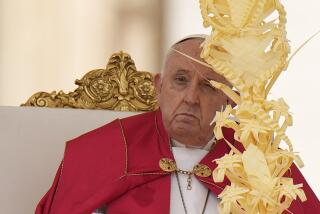Analysis: Pope Francis’ visit brings comparisons to that of John Paul II
PHILADELPHIA _ As a lifelong member of the cathedral in the heart of this city, Carol Tamburino has great memories of the last time a new pope came here and won the hearts of multitudes in a whirlwind tour of America.tmpplchld It was 1979, and the vigorous young Pope John Paul II was defining the new role of the globetrotting pope with open-air Masses and other appearances, drawing huge throngs. Widely admired as a charismatic and devout leader, he also had wider folk-hero status as the first Polish pope and as a stalwart Cold Warrior.tmpplchld “He was a favorite pope of mine,” Tamburino said Saturday after attending the Mass celebrated by Pope Francis at the Cathedral Basilica of SS. Peter and Paul. “But this Pope Francis is really changing the world. It doesn’t matter of you’re Catholic ... he just loves everyone. He’s for the underdog.”tmpplchld You could go up and down the miles of barricades in Philadelphia, New York and Washington where people set out to see the Argentine-born Francis and hear the same tributes about him.tmpplchld In some ways it’s a case of lightning striking twice: Pope Francis enthralling the young with Beatlemania-level fervor much like that of a previous young generation who chanted, “JP2, we love you!” _ warming the hearts of many older Catholics.tmpplchld “He drives around in a Fiat, not a limousine,” said Robert Arbuckle, standing near the cathedral with a contingent from St. James Church in Apollo, Pa. “He lives in a small home, not a palace. He goes to the children and the prisoners and the poor.”tmpplchld “The inspiration here on earth for what we should live out as Catholics was right there,” added Caroline Lindey after she and classmates from Oakland Catholic High School in Pittsburgh stood for four hours along the Benjamin Franklin Parkway and cheered exuberantly as the popemobile passed by.tmpplchld The similarities between the two popes are many _ both battle-hardened from serving under fierce national dictatorships, loyal to Catholic doctrine and renowned for their devotion to prayer, meditation, Mary and the saints.tmpplchld Pope Francis himself proclaimed his predecessor a saint.tmpplchld But in a new generation, he’s defining the role of the pontiff in a new way.tmpplchld “John Paul II set the bar for future popes,” said John Thavis, retired longtime Rome correspondent for Catholic News Service and author of “The Vatican Diaries” and “The Vatican Mysteries.”tmpplchld “Both popes are able to engage big crowds; they’re able to go off script and be human beings,” he said.tmpplchld “John Paul II tended to be more philosophical and give longer speeches, and in some ways to preach doctrine and explicate it for the faithful,” Thavis added. “Pope Francis is less theological, he’s more direct, he uses simpler language and he’s easier to understand. That has made him a more attractive figure to people outside the church as well as inside.”tmpplchld Pope Francis paid some notice to the American culture wars on his trip, such as meeting with the Little Sisters of the Poor, one of the Catholic groups challenging Obamacare. But for the most part his focus remained on a broader agenda.tmpplchld One of the most striking examples came in a speech he never gave _ the text he tossed aside at the Festival of Families in Philadelphia on Saturday night in favor of ad-libbed remarks. The prepared text dwelt on poverty as a devourer of families.tmpplchld “I think of all those families which lack housing or live in overcrowded conditions,” a line in the speech said. “Families which lack the basics to be able to build bonds of closeness, security and protection from troubles of any kind ... We cannot call any society healthy when it does not leave real room for family life.”tmpplchld In his final homily at Mass, he lifted up the small gestures of home life as holy while scorching religious officialdom as perverting true religion.tmpplchld And in his cathedral homily here, he made clear to the assembled clerics of the Archdiocese of Philadelphia that business would not remain as usual in the church. He called for “creativity in adapting to changed situations, carrying forward the legacy of the past not primarily by maintaining our structures and institutions, which have served us well, but above all by being open to the possibilities which the Spirit opens up to us and communicating the joy of the Gospel.”tmpplchld tmpplchld tmpplchld ___tmpplchld (c)2015 Pittsburgh Post-Gazettetmpplchld Visit the Pittsburgh Post-Gazette at www.post-gazette.comtmpplchld Distributed by Tribune Content Agency, LLC.tmpplchld
More to Read
Start your day right
Sign up for Essential California for news, features and recommendations from the L.A. Times and beyond in your inbox six days a week.
You may occasionally receive promotional content from the Los Angeles Times.






